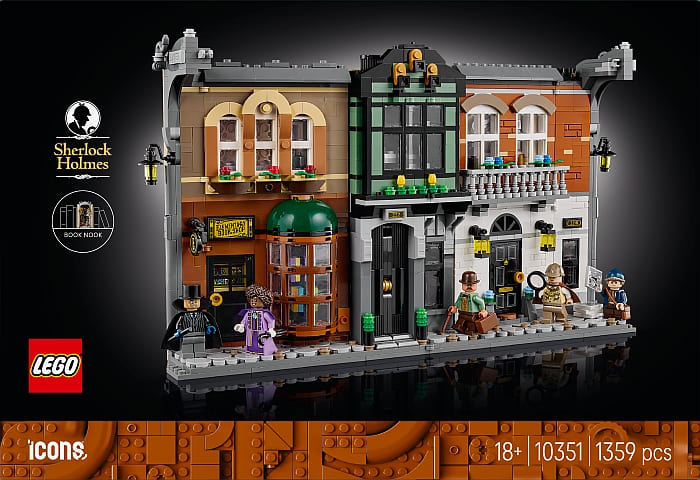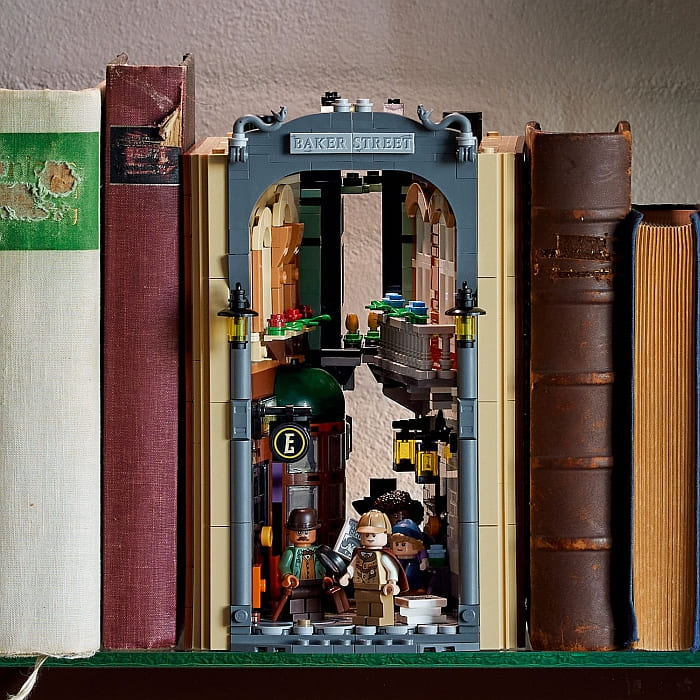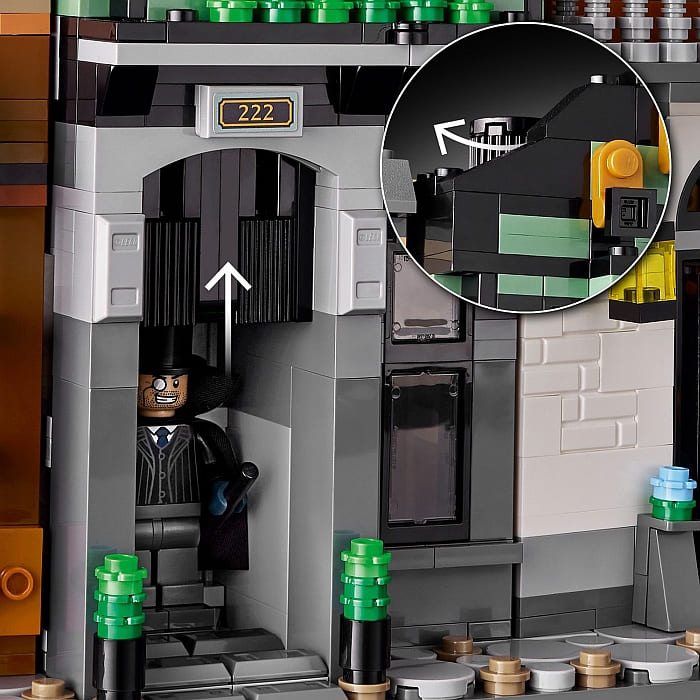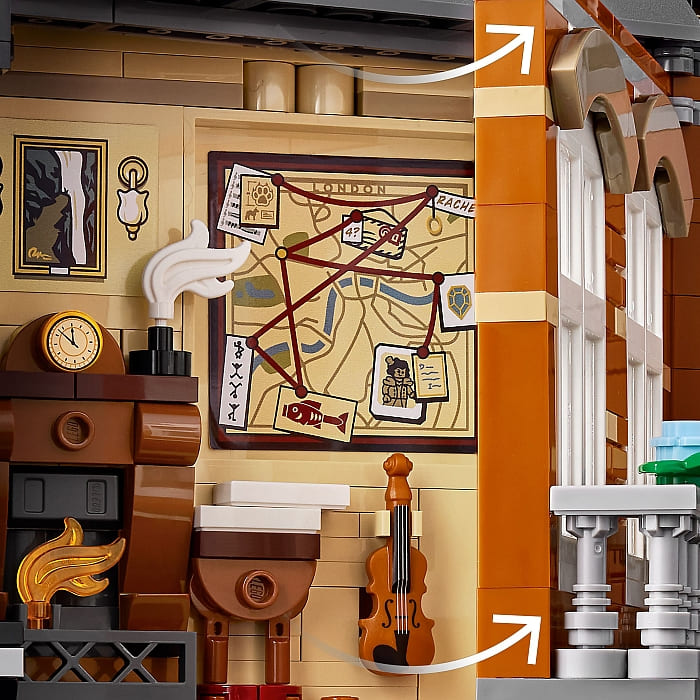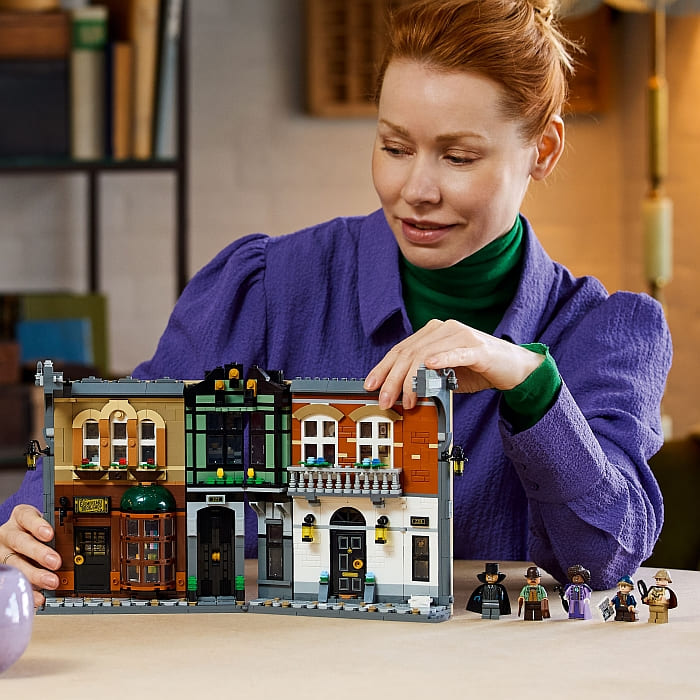Yesterday, the LEGO Group unveiled the latest additions to its LEGO Fortnite physical product range. The four new sets include: #77075 LEGO Fortnite Peely & Sparkplug’s Camp, #77076 LEGO Fortnite Durrr Burger Restaurant, and #77077 LEGO Fortnite Klombo which will all be available to purchase from the 1st of June, and the #77078 LEGO Fortnite Mecha Team Leader which is already available for pre-order and available to purchase from the 1st of August onwards.

The new sets will allow builders to recreate even more of their favorite characters and moments from LEGO Fortnite Odyssey and Fortnite. This announcement follows on from the first-ever release of LEGO Fortnite physical sets last year.
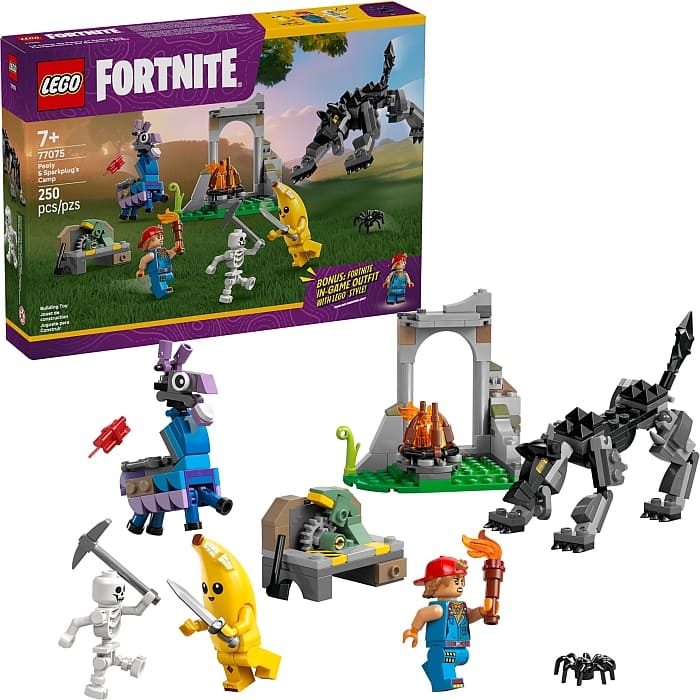
The first product in this latest launch is the #77075 LEGO Fortnite Peely & Sparkplug’s Camp. This playful, 250-piece set is inspired by some of the first challenges you meet in LEGO Fortnite Odyssey, with builders aged 7+ able to recreate the campfire, ruins, and workbench settings, with Peely, Sparkplug minifigures, as well as Supply Llama, wol,f and skeleton figures also included. If that wasn’t enough, there’s an extra surprise for gaming fans, who will be able to unlock the Sparkplug Outfit in the LEGO Fortnite and Fortnite games by scanning the QR code on the cover of the building instructions.
Price: £17.99, $22.99, €19.99. Available from June 1st at the LEGO Fortnite section of the Online LEGO Shop.

Next up is the #77076 LEGO Fortnite Durrr Burger Restaurant, a 546-piece set which allows builders to construct one of LEGO Fortnite’s most epic gameplay locations. Builders aged 10+ will be able to recreate all the action with four iconic minifigure characters included in the set, such as Beach Bomber, Beef Boss, and Grimey. There’s also an extra for fans, with the set unlocking the Beef Boss Outfit in the LEGO Fortnite and Fortnite games. Price: £54.99, $64.99, €59.99. Available from June 1st at the LEGO Fortnite section of the Online LEGO Shop.
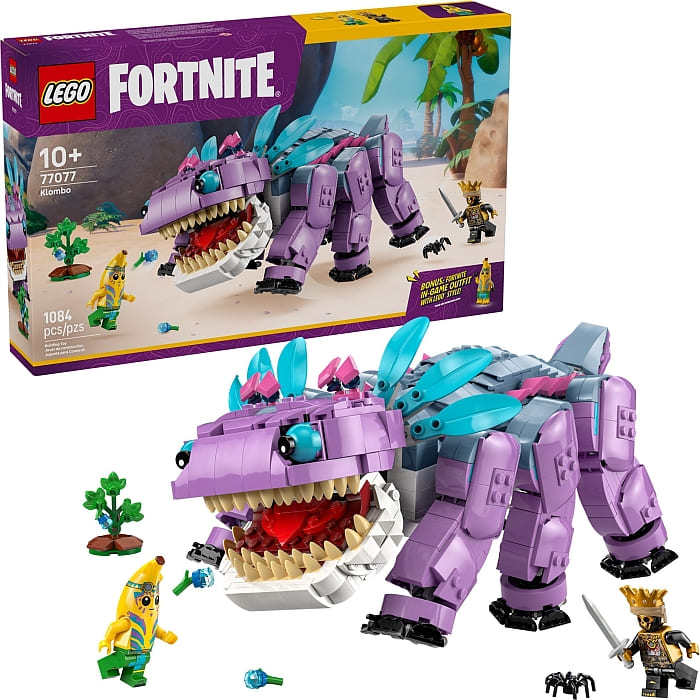
The third set announced, #77077 LEGO Fortnite Klombo will allow builders 10+ to befriend one of LEGO Fortnite’s most beloved characters. Fitted with movable legs, an opening mouth, and rotating tail, as well as including a small Klomberry bush with detachable Klomberries, this 1,084-piece model is poised to provide fans with endless hours of fun. The set also features minifigures of Island Adventure Peely and Oro and includes an exciting digital bonus allowing builders to redeem the Island Adventure Peely Outfit in the LEGO Fortnite and Fortnite games. Price: £89.99, $109.99, €99.99. Available from June 1st at the LEGO Fortnite section of the Online LEGO Shop.
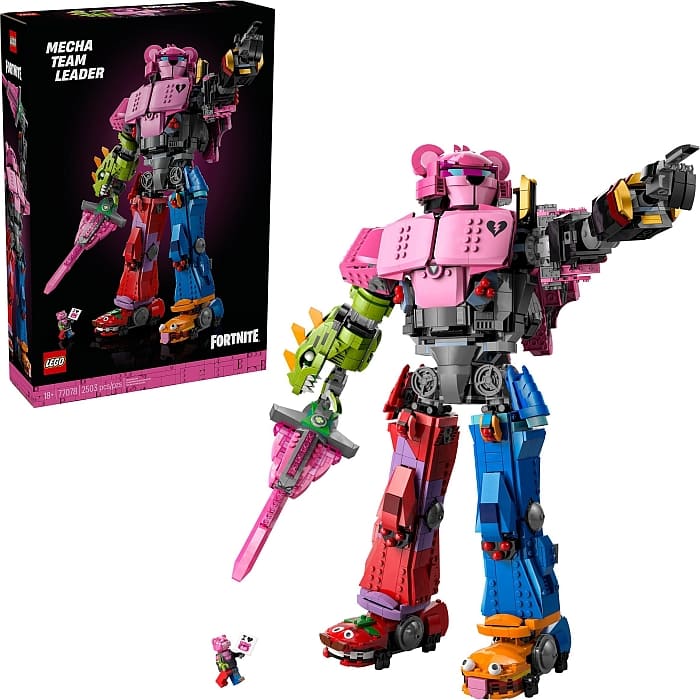
Completing the new releases is a set perfect for older builders, the #77078 LEGO Fortnite Mecha Team Leader. The 2,503-piece model offers fans an immersive project based on the iconic character that saved the Fortnite Battle Royale Chapter 1 Island, offering hours of fun assembling the robot and providing the ultimate display piece once complete. The set also includes two digital bonus items, allowing players to redeem the Mecha Team Leader and Mecha Team Shadow Outfits, redeemable in the LEGO Fortnite and Fortnite games. Price: £209.99, $249.99, €229.99. Available for pre-order at the LEGO Fortnite section of the Online LEGO Shop.
“Whether it be physical building or the diverse digital experiences on offer, LEGO Fortnite has something for everyone”, said Remi Marcelli, Senior Vice President, GAME at the LEGO Group. “These latest sets allow us to continue offering amazing LEGO Fortnite play experiences that surprise and delight builders around the world.”
LEGO Fortnite is the home to all LEGO experiences within Fortnite, including LEGO Fortnite Odyssey, the original survival crafting game that launched in December 2023, and LEGO Fortnite Brick Life, a new social roleplay game launched in December 2024. These product launches are the latest to come from the long-term partnership between Epic Games and the LEGO Group to develop fun and safe digital spaces for children and families. For more information, visit the LEGO Fortnite section of the Online LEGO Shop.

What do you think? Are you excited for the new LEGO Fortnite sets? Feel free to share your thoughts and discuss in the comment section below!
And you might also like to check out the following related posts:
